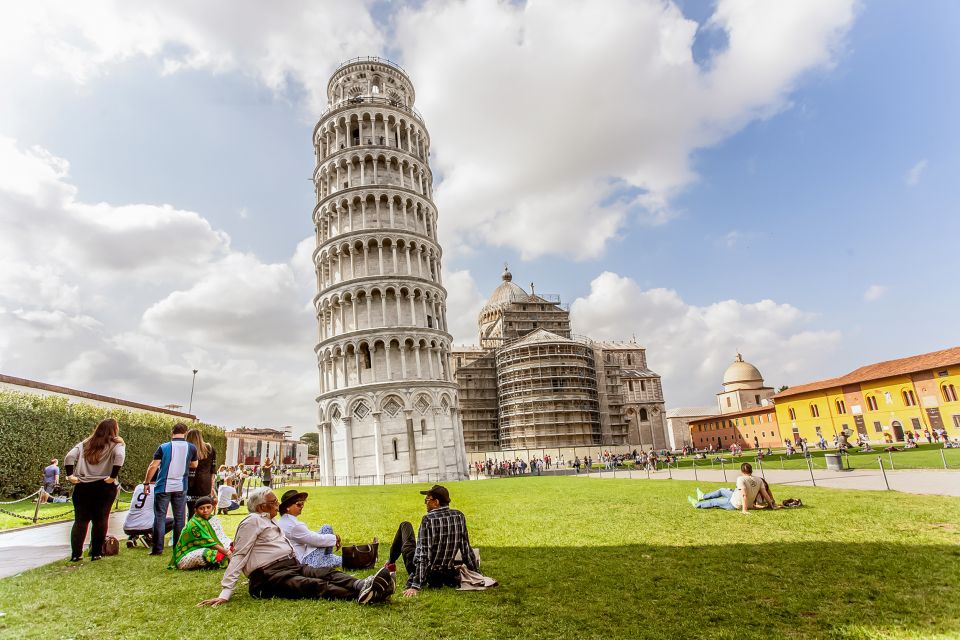Pisa Tower Facts

Pisa Tower Facts: Fascinating Insights About the Leaning Tower of Pisa
The Leaning Tower of Pisa, a symbol of architectural brilliance and resilience, is a marvel of engineering and one of the most famous landmarks in the world. While many know about its iconic tilt, this architectural wonder holds a treasure trove of lesser-known facts that make it even more intriguing. This comprehensive guide dives deep into fascinating Pisa Tower facts to inspire and inform your journey.
1. The Tower’s Tilt Is Gradually Decreasing
While the Leaning Tower is famous for its tilt, many visitors don’t realize that the angle of the lean has been steadily reduced over the years.
- Original Tilt: The tilt was over 5 degrees before restoration began.
- Current Tilt: It now leans at 3.97 degrees thanks to stabilization efforts between 1990 and 2001.
- Future Stability: Engineers predict the tower will remain stable for at least the next 300 years.
2. It’s a Bell Tower Without Bells Being Rung
The Leaning Tower was constructed as the bell tower for Pisa’s Cathedral. However, the seven bells housed in the tower are no longer rung to avoid vibrations that could destabilize the structure.
- Fun Fact: Each bell corresponds to a musical note, and the largest bell weighs over 3.5 tons.
3. Construction Was Delayed for Nearly a Century
The Leaning Tower took over 200 years to complete due to interruptions caused by war, funding shortages, and structural challenges.
- Paused Construction: Work halted for 94 years after builders noticed the tilt, which ironically saved it. The pause allowed the soil to settle, preventing an early collapse.
4. It Was a Symbol of Pisa’s Maritime Power
In the 12th century, Pisa was a powerful maritime republic, and the construction of the Piazza dei Miracoli complex, including the tower, symbolized the city’s wealth and influence.
- Competitive Pride: Rival cities like Florence and Venice had grand projects of their own, prompting Pisa to build one of the most ambitious towers of its time.
5. It’s One of the Most Photographed Landmarks in the World
The Leaning Tower is a favorite subject for photographers and visitors alike.
- Famous Pose: The playful “holding up the tower” pose is a global phenomenon.
- Instagram Popularity: The hashtag #leaningtowerofpisa has millions of posts, making it one of the most shared landmarks on social media.
6. The Leaning Tower Has Survived Several Earthquakes
Despite its precarious tilt, the Leaning Tower has withstood multiple earthquakes over the centuries.
- Why? Engineers credit the tower’s survival to the same soft soil that caused the tilt. The soil absorbs seismic waves, reducing their impact on the structure.
7. Galileo Galilei’s Famous Experiment
Legend has it that the renowned scientist Galileo Galilei, a native of Pisa, conducted his groundbreaking experiment on gravity from the tower. He allegedly dropped two objects of different weights to demonstrate that their speed of descent was independent of their mass.
8. It’s Not the Only Leaning Structure in Pisa
While the Leaning Tower is the most famous, other structures in Pisa also lean due to the unstable soil.
- Leaning Church of St. Nicola: A nearby bell tower with a noticeable tilt.
- Leaning Church of St. Michele degli Scalzi: Another tilted structure within the city.
9. It’s Been a UNESCO World Heritage Site Since 1987
The Leaning Tower, along with the entire Piazza dei Miracoli complex, was designated as a UNESCO World Heritage Site.
- Why? The site was recognized for its outstanding architectural and artistic significance.
10. The Tower Was Nearly Demolished
During World War II, Allied forces considered demolishing the Leaning Tower to prevent it from being used as an observation post. However, its unique appearance reportedly led to its preservation.
11. The Tower Has Inspired Fiction and Art
The Leaning Tower has been a source of inspiration for artists, writers, and filmmakers for centuries.
- Cultural References: It has appeared in movies, books, and cartoons, often as a comedic or symbolic element.
- Artistic Interpretations: From Renaissance paintings to modern-day art installations, the tower’s unique silhouette continues to captivate creators.
12. The Lean Was Intentional… According to Myths
While the tilt is a well-documented engineering flaw, some local legends suggest that the lean was an intentional design to showcase Pisa’s engineering daring. While this myth is entertaining, there’s no evidence to support it.
13. The Tower’s Marble Shines Brighter After Restoration
The Leaning Tower’s striking white and grey marble underwent extensive cleaning and restoration during the stabilization project. Today, the marble shines brighter, accentuating the beauty of the Romanesque design.
14. It Hosts Over 5 Million Visitors Annually
The Leaning Tower is one of Italy’s most visited landmarks, attracting millions of tourists each year.
- Climbing Limit: Only a limited number of visitors can climb the tower each day to prevent overcrowding and preserve the structure.
15. The Name “Pisa” Reflects Its Geographic Origin
The city’s name, Pisa, comes from a Greek word meaning “marshy land,” a nod to the region’s soft and unstable soil—ironically the reason behind the tower’s tilt.
Conclusion
The Leaning Tower of Pisa is far more than just a tilted structure—it’s a testament to architectural ambition, resilience, and historical importance. Whether you’re marveling at its survival through earthquakes, learning about Galileo’s experiments, or snapping playful photos, the tower’s fascinating facts add depth to its allure. Be sure to explore this iconic site and uncover its stories on your next visit.
